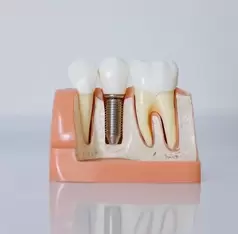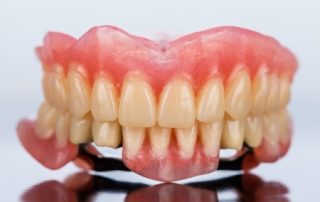- Home
- About Us
-
Our Services
- Root Canal Procedure
- Tooth Extractions
- Wisdom Teeth Extractions
- Implants
- White Dental Fillings
- Crowns (Dental Caps)
- Dental Bridges
- Teeth Whitening
- Dentures and Partial Dentures
- Oral Hygiene
- Teeth Cleaning
- Treatment of Periodontal (Gum) Disease
- Digital Photography
- Digital X-rays
- Sealants
- Oral Sedation
- Forms
- Our Blog
- Contact Us
- Home
- About Us
-
Our Services
- Root Canal Procedure
- Tooth Extractions
- Wisdom Teeth Extractions
- Implants
- White Dental Fillings
- Crowns (Dental Caps)
- Dental Bridges
- Teeth Whitening
- Dentures and Partial Dentures
- Oral Hygiene
- Teeth Cleaning
- Treatment of Periodontal (Gum) Disease
- Digital Photography
- Digital X-rays
- Sealants
- Oral Sedation
- Forms
- Our Blog
- Contact Us
 Why should I get dental implants instead of dentures Missing teeth is one of the most common dental problems in older adults. According to the American Association of Oral and Maxillofacial Surgeons, more than 70 percent of adults over the age of 35 are missing one or more of their teeth. A missing tooth may be a source of embarrassment and may cause difficulty with eating, speaking and smiling. Fortunately, today’s dental implants offer a permanent solution to the problem of tooth loss. Comfort Dental implants are a more comfortable option compared to dentures. Implants are permanently placed in the mouth. There is no need for messy adhesives. The implants will not slip and slide around while eating or talking. As the jaw bone degrades with age, dentures can lose their fit and require relining or even replacement by a dentist every few years. Appearance Thanks to recent technological advances in cosmetic dentistry, dental implants can be made to look just like your natural teeth. The implants are designed by cosmetic dentistry specialists to have the same color as your teeth so they blend right into your mouth. Dentures can become scratched by abrasive cleaners and the pink portion of the denture can become bleached white, making these dental appliances obvious to others. A dental implant also helps maintain the health and shape of your jaw bone, which provides the contours and shaping of your face. A dental implant is cleaned just like the rest of your teeth. You can continue to use your favorite floss, toothpaste and mouthwash. With dentures, you’ll need to take them out every night and clean them with a special cleanser. The dentures may also need to be soaked on a regular basis. Improper denture maintenance can result in oral infections and promote cavities in your remaining natural teeth. Durability A dental implant can last for 20 years or longer with proper care. A denture, on the other hand, needs to be relined every year or two and requires full replacement every 5 to 7 years as a result of wear and tear and the changing configuration of your jaw bone. A dental implant is not just a solution for people missing a single tooth. They can also be used in people missing multiple teeth. An experienced implant dentist can help determine whether you are a candidate for dental implant surgery.
0 Comments
 Dental Bridge Problems and the benefits of getting them fixed With good oral hygiene and regular visits to the dentist, a well-constructed dental bridge can last for about 10 to 20 years. However, a poorly constructed one can lead to various complications that will continue for quite some time. In addition to putting them in, a dentist can also sort out different dental bridge problems. The following are some of the common dental bridge problems: Falling out When a person’s dental bridges begin to fall out or start to get loose, they should take it as a warning that there are some underlying issues. One of the reasons behind this problem could be that the mechanical preparation of the tooth was inadequate. This means that the tooth was insufficiently trimmed down. Other reasons could be the underlying tooth started to decay, or that the bridge wasn’t properly constructed in the dental laboratory. Fractures A porcelain fracture can also lead to dental-bridge problems. A fracture refers to a hairline break within the dental bridge. This particular problem occurs mainly for of two reasons, the first one could be there was processing error in the dental laboratory, and the other could be there was a flaw in the construction of the dental bridge. However, fractures can be corrected by a qualified dentist. Space Another problem that occurs with dental bridges is when there is space between the trimmed tooth and the bridge. Such a problem means that the tooth is not completely covered as it should be. In addition, the unwanted space can lead to more problems. For example, it will become the main target for cavities and tooth decay. Size The size of a dental bridge or crown can be a problem. A person’s dental bridges are customized to fit their mouth. However, issues can arise when the dental bridges or crowns are either too bulky or too slim. Food may be trapped in the bridge if it’s too slim, or there could be some cheek irritation if it’s too bulky. Insufficient Number of Replacements Dental bridges are intended to cover trimmed teeth or replace missing ones. However, a problem could arise if the dental bridges aren’t constructed to replace the required number of teeth. For instance, if you have 4 missing teeth and your dentist believes that you can’t handle a large bridge, he or she will order a bridge with 3 crowns from the dental lab instead of 4. As a result, you will have a dental bridge that is struggling to replace multiple gaps using an insufficient amount of teeth. The good news is all the dental bridge problems mentioned above can be easily rectified. Allowing a qualified dentist to deal with these problems will lead to some the following things:
|
Archives
March 2023
Categories |
Privacy Policy
(419) 472-6645 | 3130 W Sylvania Ave, Toledo, OH 43613, USA
© E. Roy Finley Dentistry 2024 | All Rights Reserved
(419) 472-6645 | 3130 W Sylvania Ave, Toledo, OH 43613, USA
© E. Roy Finley Dentistry 2024 | All Rights Reserved


 RSS Feed
RSS Feed
